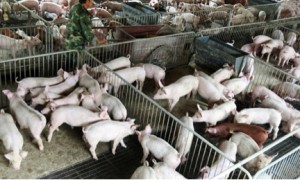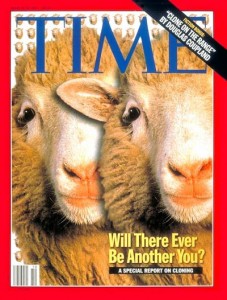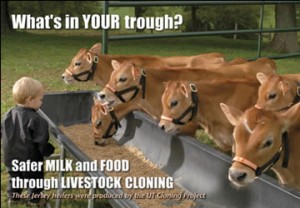Imagine that cloning oneself could produce an exact replica. The clone would be the same age, have the same mind, and even the same scar that he received as a kid. Many people wish cloning worked this way because they could then be in two places at once and double their productivity rate. In addition, as long as both the person and the clone were treated as individuals this useful procedure seems ethical because the person wants to be cloned, and since the clone has an identical reasoning pattern, the clone would also consent to being a clone. Unfortunately, cloning does not work this way, and the clone would in reality be a completely different individual with identical DNA to the original person.
In his essay “Why We Should Ban the Cloning of Humans: The Wisdom of Repugnance” Leon Kass lists many uses of human cloning. Two of these uses include “’replacing’ a beloved spouse or child who is dying or has died” and “replicating individuals of great genius, talent or beauty” (Holland 34). Like the scenario discussed earlier, these two circumstances are completely impossible because cloning does not duplicate a person. Even identical twins, which are actually clones of each other, are completely different individuals altogether. According to Tina Hesman Saey, “by birth, genetic doubles use their DNA differently…by regulating the activity of certain genes, they can profoundly influence how the DNA blueprint is used to create and operate a living organism.” (sciencenews.org). Hence, the clone may not look the same or have the same physical capacities of the original person due to these epigenetic differences. For instance, check out these clones (identical twins), Otto and Ewald:
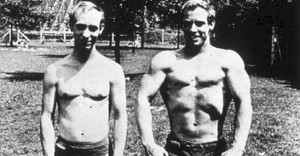
Moreover, underlying diseases that were completely shut off or mild could become severe in the cloned individual. If the clone is living a miserable existence due to a diseased state, then this raises even more ethical questions concerning the cloning process.
Furthermore, in the case of cloning females, there is a chance that they could express entirely different genes. This was made evident in the case where a calico cat named Rainbow was cloned, but the CC (carbon copy), the clone, had a completely different fur color. This is because fur color is partially determined by genes that reside on the X chromosome. Female mammals have two X chromosomes, but only one is activated in each cell. The activation pattern varies amongst cells. When CC was cloned, her cells did not adopt the activation pattern of Rainbow. “Rainbow and CC are living proof that a clone will not look exactly like the donor of its genetic material” (Genetic Science Learning Center).
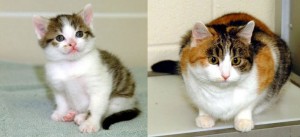
Even if epigenetics did not play a role in development, the environment would drastically effect the clone’s development. The clone cannot undergo every single nurturing experience of the original person; hence, they cannot develop an identical mindset, personality, talent, or desires of the original person. The clone would develop into an individual that may not want to have the pressures of living up to the potential of someone else.
Subsequently, it is highly implausible to “replace” a lost family member or friend as well as to “replicate” a celebrity (or rather their talent). Doing so requires duplicating a person’s nature and nurturing exactly. In any matter, this subjects one to appreciate and enjoy, instead of taking for granted, the rare gift that is human life. Additionally, it allows the introduction of new skills into society and/or the creation of a legacy of person who has passed away.
Sources:
Genetic Science Learning Center. “Why Clone?.” Learn.Genetics 26 January 2014 http://learn.genetics.utah.edu/content/cloning/whyclone/
Kass, Leon R. “Why We Should Ban the Cloning of Humans: The Wisdom of Repugnance.” Arguing About Bioethics. Ed. Stephen Holland. New York: Routledge, 2012. 130-48. Print.
Lloyd, Sam. “Check out Identical Twins Otto and Ewald.” The Sam Effect. Inbound Marketing, n.d. Web. 27 Jan. 2014. http://thesameffect.com/check-out-identical-twins-otto-and-ewald/.
Saey, Tina Hesman. “Study Shows Where Identical Twins Part Ways.” Science News. Society for Science & the Public, 17 July 2012. Web. 26 Jan. 2014. https://www.sciencenews.org/article/study-shows-where-identical-twins-part-ways
